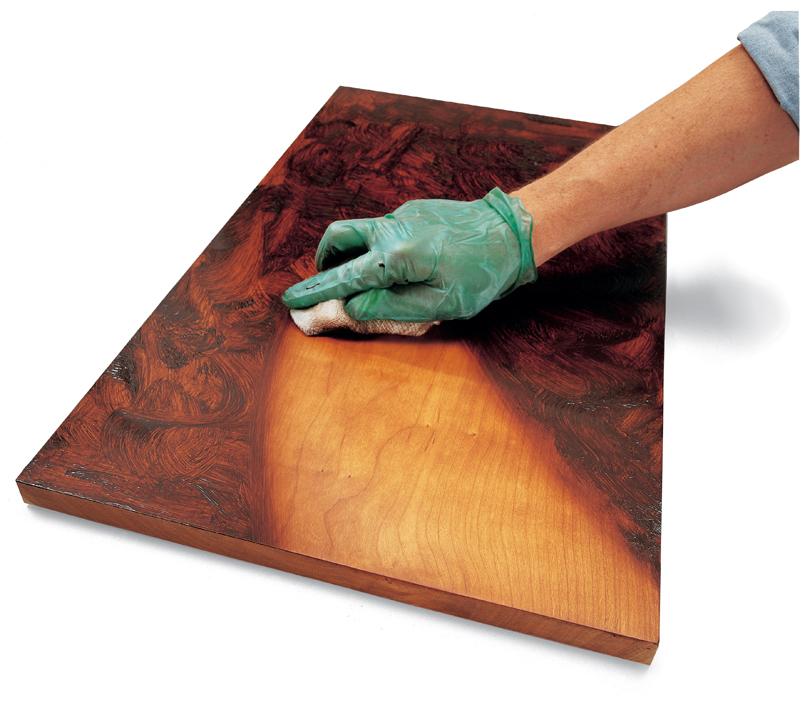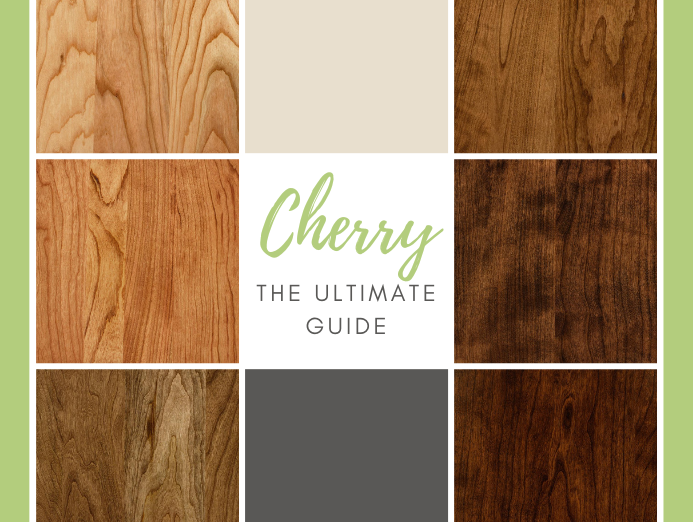When it comes to woodworking, one common question that arises is, “Is cherry wood easy to stain?” Well, my young DIY enthusiasts, let’s dive into the world of cherry wood and discover its staining potential. So buckle up and get ready to learn all about the staining adventures with this beautiful and versatile wood!
Cherry wood, known for its elegant reddish-brown hue, is a popular choice for furniture and cabinetry. But does it play nice with stains? That’s the million-dollar question! Don’t worry, my curious minds, I’ve got the scoop for you. We’ll explore the characteristics of cherry wood and uncover whether staining it is a breeze or a challenge. Get ready to unlock the secrets of staining cherry wood like a pro!
Now, my young craftsmen and craftswomen, it’s time to embark on a stain-tastic journey into the world of cherry wood. Are you ready to uncover the mysteries of staining this magnificent wood? Well, hold on tight because we’re about to find out if cherry wood is a stain-friendly superstar or if it requires a little extra love and attention. Let’s get started!

Is Cherry Wood Easy to Stain?
In the world of woodworking, cherry wood is a popular choice for its rich, warm tones and beautiful grain patterns. But when it comes to staining cherry wood, there are some considerations to keep in mind. In this article, we will explore whether cherry wood is easy to stain, the factors that can affect the staining process, and tips for achieving the best results.
Understanding Cherry Wood
Cherry wood is known for its distinct reddish-brown color that deepens over time, thanks to exposure to natural light. It is a hardwood that is prized for its durability and resistance to wear. However, the unique characteristics of cherry wood can pose challenges when it comes to staining.
One of the major factors that can make staining cherry wood tricky is its natural color variation. Cherry wood has both light and dark areas, with the heartwood being darker than the sapwood. This variation can lead to uneven staining if not properly addressed. Additionally, cherry wood has a tendency to blotch when stained, meaning it absorbs stain unevenly, resulting in splotchy or streaky finishes.
To overcome these challenges, it is essential to properly prepare the cherry wood before staining and to choose the right staining techniques and products.
Preparation and Techniques for Staining Cherry Wood
Before staining cherry wood, it is crucial to prepare the surface properly. This includes sanding the wood to create a smooth and even surface and using a wood conditioner. A wood conditioner helps to seal the pores of the wood, minimizing uneven absorption of the stain. It is especially important when working with cherry wood to prevent blotching.
When selecting a stain for cherry wood, it is best to choose a gel stain or a dye-based stain. These types of stains penetrate the wood more evenly and minimize the risk of blotching. Avoid using oil-based stains on cherry wood, as they can exacerbate blotching issues.
When applying the stain, it is important to work in small sections and wipe off any excess stain after a few minutes. This helps to prevent uneven absorption and blotching. It may also be necessary to apply multiple coats of stain to achieve the desired depth of color.
Benefits of Staining Cherry Wood
Although staining cherry wood can present some challenges, there are several benefits to consider. First and foremost, staining cherry wood can enhance its natural beauty and bring out the rich tones and grain patterns. It also provides an opportunity to customize the color of the wood to match your desired aesthetic.
Another benefit of staining cherry wood is that it helps to protect the surface from wear and tear. Stain acts as a barrier, preventing moisture and other elements from damaging the wood. This can extend the lifespan of your cherry wood furniture or other woodworking projects.
In addition, staining cherry wood allows you to create different finishes and styles, from traditional to contemporary. The versatility of cherry wood, along with the options for staining, opens up a world of design possibilities.
Choosing the Right Stain for Cherry Wood
When it comes to choosing the right stain for cherry wood, there are several factors to consider. The type of stain, the level of transparency, and the desired color are all crucial elements in achieving the desired result.
Type of Stain
There are various types of stains available for cherry wood, including oil-based stains, water-based stains, gel stains, and dye-based stains. Each type has its own advantages and disadvantages.
Oil-based stains are popular for their rich color and durability. However, they can promote blotching on cherry wood. Water-based stains are less likely to cause blotching but may not penetrate the wood as deeply. Gel stains are thicker and provide better control over application, making them suitable for cherry wood. Dye-based stains are another option, offering intense color and even penetration.
Transparency
The level of transparency of the stain will affect the final look of the cherry wood. Transparent stains allow the natural color and grain of the wood to show through, whereas opaque stains provide more coverage and can completely change the appearance of the wood.
If you want to enhance the natural beauty of the cherry wood, opt for a transparent or semi-transparent stain. For a more dramatic transformation or to hide imperfections in the wood, an opaque stain may be the better choice.
Color
Choosing the right color of the stain is a personal preference and depends on the desired look and feel of the finished piece. Cherry wood naturally darkens over time, so take this into account when selecting a stain color. It is often recommended to test the stain on a small, inconspicuous area of the wood to ensure it achieves the desired result.
Key Takeaways: Is Cherry Wood Easy to Stain?
- Cherry wood is generally easy to stain due to its moderate density and even grain structure.
- Before staining cherry wood, it is important to sand the surface properly to ensure a smooth finish.
- Applying a pre-stain conditioner can help with the even absorption of stain and prevent blotchy results.
- Using a gel stain or a water-based stain is recommended for staining cherry wood as they provide more control and better results.
- Always do a test patch on a small, inconspicuous area of the cherry wood before applying stain to the entire surface.
Frequently Asked Questions
Cherry wood is a popular choice for furniture and cabinetry due to its rich, warm tones and beautiful grain patterns. If you’re considering staining cherry wood for your next project, here are some commonly asked questions and answers to help you understand the process.
1. How well does cherry wood take stain?
Cherry wood is known for its natural ability to accept stain and develop a deep, rich color. Its open pores allow stain to penetrate the wood, creating a beautiful finish. However, it’s important to note that cherry wood can vary in density and may absorb stain differently depending on its specific characteristics.
To ensure an even stain application, it’s recommended to prepare the wood properly by sanding it to a smooth surface. Applying a pre-stain conditioner can also help to prevent blotchiness and achieve a more consistent finish. By following these steps, cherry wood can take stain quite well.
2. Are there any challenges involved in staining cherry wood?
While cherry wood is generally easy to stain, there are a few challenges to be aware of. One common issue is the wood’s tendency to develop blotchy spots if not properly prepared and conditioned before staining. The natural color variations in cherry wood can be enhanced or masked depending on the staining process.
Another challenge is the wood’s tendency to darken with exposure to sunlight over time. This is a natural characteristic of cherry wood and is often desired for its unique aging process. However, it’s important to consider this when choosing a stain color, as it may continue to darken over the years.
3. Which stain colors work best for cherry wood?
When it comes to choosing stain colors for cherry wood, it’s important to consider the desired outcome and personal preference. Darker stains like espresso or walnut can highlight the wood’s natural beauty and grain patterns, while lighter stains like honey or golden oak can provide a more subtle, warm tone.
It’s always recommended to test the stain color on a small, inconspicuous area of the wood before applying it to the entire surface. This will allow you to see how the stain interacts with the specific characteristics of the cherry wood and determine the best color for your project.
4. Can cherry wood be stained to look like another type of wood?
Cherry wood has its own distinct color and grain patterns that are highly sought after. However, if you prefer the look of a different wood species, it is possible to stain cherry wood to mimic the appearance of other woods. By using the right combination of stains and techniques, you can achieve a finish that resembles oak, mahogany, or other wood types.
Keep in mind that matching the exact look of another wood species can be challenging, as cherry wood has its own unique characteristics. It’s recommended to experiment with different stain colors and techniques on a small sample piece of cherry wood before applying it to your final project.
5. How do I maintain the color and beauty of stained cherry wood?
To maintain the color and beauty of stained cherry wood, it’s important to protect it from sunlight and excessive moisture. Direct sunlight can cause the wood to darken and lose its luster over time, so consider using window coverings or placing furniture away from direct sunlight.
Regular cleaning and dusting with a soft cloth are also recommended to keep the wood looking its best. Avoid using harsh chemical cleaners or abrasive materials that could damage the stained surface. By taking these simple steps, you can enjoy the lasting beauty of your stained cherry wood for years to come.

Summary
Cherry wood is great for staining because it has a smooth texture and fine grain. It accepts stain evenly, allowing you to get a beautiful finish. However, it’s important to prepare the wood properly by sanding and using a pre-stain conditioner.
